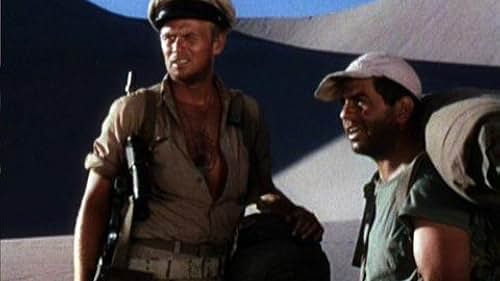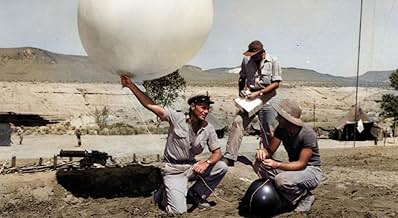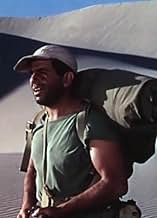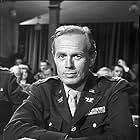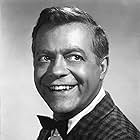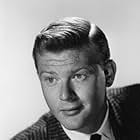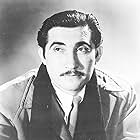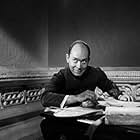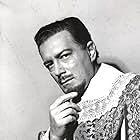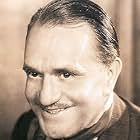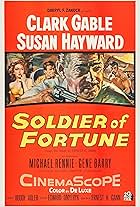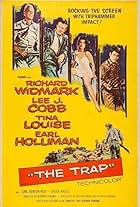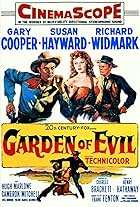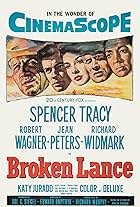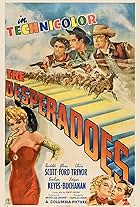IMDb RATING
6.3/10
1.2K
YOUR RATING
In 1944, US Navy specialists run a weather station in the Gobi desert where they are harassed by Japanese warplanes but aided by local Mongol nomads.In 1944, US Navy specialists run a weather station in the Gobi desert where they are harassed by Japanese warplanes but aided by local Mongol nomads.In 1944, US Navy specialists run a weather station in the Gobi desert where they are harassed by Japanese warplanes but aided by local Mongol nomads.
Max Showalter
- Walter Landers
- (as Casey Adams)
Edgar Barrier
- Yin Tang
- (uncredited)
Willis Bouchey
- Capt. Gates
- (uncredited)
James Conaty
- Admiral
- (uncredited)
Franklyn Farnum
- Quartermaster General
- (uncredited)
John Hedloe
- Pilot
- (uncredited)
Earl Holliman
- Frank Swenson
- (uncredited)
Frank Iwanaga
- Lieutenant
- (uncredited)
Storyline
Did you know
- TriviaNixon and Fallon, NV were both used as location sites, and Paiute Indians residing on a reservation in Nixon played Mongol extras.
- GoofsMcHale claims that "Gobi Desert" means "wall of spears." Actually, "Gobi" is the Mongolian word for "desert."
- Quotes
[Walter flirts successfully with a Mongolian woman]
Jenkins: Well, looks like you made a hit, Walter my boy. Tell me, how do you do it?
Walter Landers: My training as a meterorologist. I can take one look at a girl and tell weather.
- Crazy creditsOpening credits prologue: In the Navy records in Washington, there is an obscure entry reading "Saddles for Gobi."
This film is based on the story behind that entry--one of the strangest stories of World War II.
- ConnectionsEdited into All This and World War II (1976)
Featured review
There were a lot of WW2 pictures made in the late 40s and early 50s, made as uncomplicated gung-ho nostalgia, doubling as propaganda for the ongoing war in Korea. By and large they were cheap and cheerful affairs; poorly scripted and poorly acted. Destination Gobi is just such a picture, its main exception being that it is somewhat spruced up by the direction of the great Robert Wise.
Being relatively low-budget Destination Gobi is rather short on action, instead relying upon suspense sequences and musings on military life for its entertainment value. Sadly the screenplay isn't quite up to the task. There is a sprinkling of quasi-philosophical dialogue, most of which is feeble and unconvincing (the only line I liked was the one about Inner Mongolia being "hotter, dryer and inner"). The characters are the usual B-movie one-dimensionals, and many scenes are so lacking in credibility the tension can't work because there is no real sense of danger.
This is where Robert Wise comes in. It's often interesting, albeit dissatisfying, to see a really top-notch director slumming it in a B-unit to see what they can make out of the weakest of elements. This is especially true of Wise, who had no ego and always aimed to make the best out of whatever the studios threw at him. This is his first colour picture and, as far as I know his earliest to really make use of wide-open spaces. Most of Wise's pictures up until now had been gritty thrillers, and even his 1948 horse opera Blood on the Moon is literally a dark Western. It's been remarked by others that the landscape in Destination Gobi is filmed to show off its beauty, but also watch Wise's timing. It would be normal convention to cut to a landscape shot after the opening scene at SACO HQ, but in fact Wise takes care not to properly show us the desert and emphasises the smallness and darkness of the tent. Only after the Mongols have been introduced do we get these breathtaking outdoor shots. The contrast is striking and it makes us associate the Mongols with the beauty of the location, even if only subconsciously.
I am sure Wise knew he had been given a bum script, and he takes advantage of the quiet moments. Wise's direction was generally at its best when there was no dialogue anyway (check out Lawrence Tierney in Born to Kill) and he particularly seemed to like drawing out these moments and giving the actors space to emote. Consequently there is tenderness uncharacteristic of such a picture when the soldiers mourn a fallen comrade, opening the scene with a respectful long shot of the gravesite. Again the natural beauty of the landscape is used, this time as a bittersweet counterpoint.
The cast is headed by Richard Widmark, who like Wise was good at what he did yet spent much of his career in B-flicks. And, as with Wise, we can look at this positively and say that he at least leant some quality to pictures that have very little else going for them. He can't quite make the appalling dialogue sound plausible, but at least he emotes well and has strong presence. The Mongol characters may not be granted any dignity by the screenplay, but at least the reliable Murvyn Vye turns in a dignified performance as Chief Kengtu, adding a layer of personality to the character that is not there in the script.
These little oases of quality do not prevent Destination Gobi from mostly being a desert of mediocrity. Studying Robert Wise's work, this is like a little exercise in thoughtful direction, but nothing more because there isn't enough depth to the story or characters to make it pay off. And who would expect more from a ninety-minute no-brainer? However, at least the efforts of Wise (as well as renowned art directors Lyle Wheeler and Lewis Creber, and cinematographer Charles Clarke well-deserved honourable mentions) have made it nice to look at. It's occasionally even entertaining as well.
Being relatively low-budget Destination Gobi is rather short on action, instead relying upon suspense sequences and musings on military life for its entertainment value. Sadly the screenplay isn't quite up to the task. There is a sprinkling of quasi-philosophical dialogue, most of which is feeble and unconvincing (the only line I liked was the one about Inner Mongolia being "hotter, dryer and inner"). The characters are the usual B-movie one-dimensionals, and many scenes are so lacking in credibility the tension can't work because there is no real sense of danger.
This is where Robert Wise comes in. It's often interesting, albeit dissatisfying, to see a really top-notch director slumming it in a B-unit to see what they can make out of the weakest of elements. This is especially true of Wise, who had no ego and always aimed to make the best out of whatever the studios threw at him. This is his first colour picture and, as far as I know his earliest to really make use of wide-open spaces. Most of Wise's pictures up until now had been gritty thrillers, and even his 1948 horse opera Blood on the Moon is literally a dark Western. It's been remarked by others that the landscape in Destination Gobi is filmed to show off its beauty, but also watch Wise's timing. It would be normal convention to cut to a landscape shot after the opening scene at SACO HQ, but in fact Wise takes care not to properly show us the desert and emphasises the smallness and darkness of the tent. Only after the Mongols have been introduced do we get these breathtaking outdoor shots. The contrast is striking and it makes us associate the Mongols with the beauty of the location, even if only subconsciously.
I am sure Wise knew he had been given a bum script, and he takes advantage of the quiet moments. Wise's direction was generally at its best when there was no dialogue anyway (check out Lawrence Tierney in Born to Kill) and he particularly seemed to like drawing out these moments and giving the actors space to emote. Consequently there is tenderness uncharacteristic of such a picture when the soldiers mourn a fallen comrade, opening the scene with a respectful long shot of the gravesite. Again the natural beauty of the landscape is used, this time as a bittersweet counterpoint.
The cast is headed by Richard Widmark, who like Wise was good at what he did yet spent much of his career in B-flicks. And, as with Wise, we can look at this positively and say that he at least leant some quality to pictures that have very little else going for them. He can't quite make the appalling dialogue sound plausible, but at least he emotes well and has strong presence. The Mongol characters may not be granted any dignity by the screenplay, but at least the reliable Murvyn Vye turns in a dignified performance as Chief Kengtu, adding a layer of personality to the character that is not there in the script.
These little oases of quality do not prevent Destination Gobi from mostly being a desert of mediocrity. Studying Robert Wise's work, this is like a little exercise in thoughtful direction, but nothing more because there isn't enough depth to the story or characters to make it pay off. And who would expect more from a ninety-minute no-brainer? However, at least the efforts of Wise (as well as renowned art directors Lyle Wheeler and Lewis Creber, and cinematographer Charles Clarke well-deserved honourable mentions) have made it nice to look at. It's occasionally even entertaining as well.
- How long is Destination Gobi?Powered by Alexa
Details
Box office
- Budget
- $1,340,000 (estimated)
- Runtime1 hour 30 minutes
- Color
- Aspect ratio
- 1.37 : 1
Contribute to this page
Suggest an edit or add missing content


